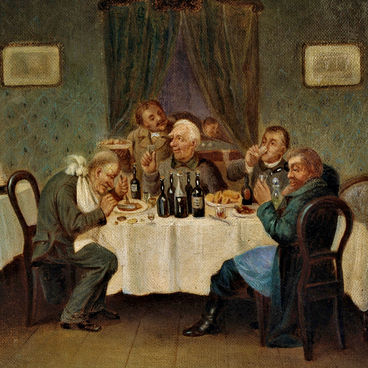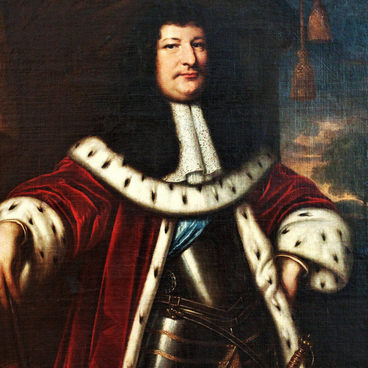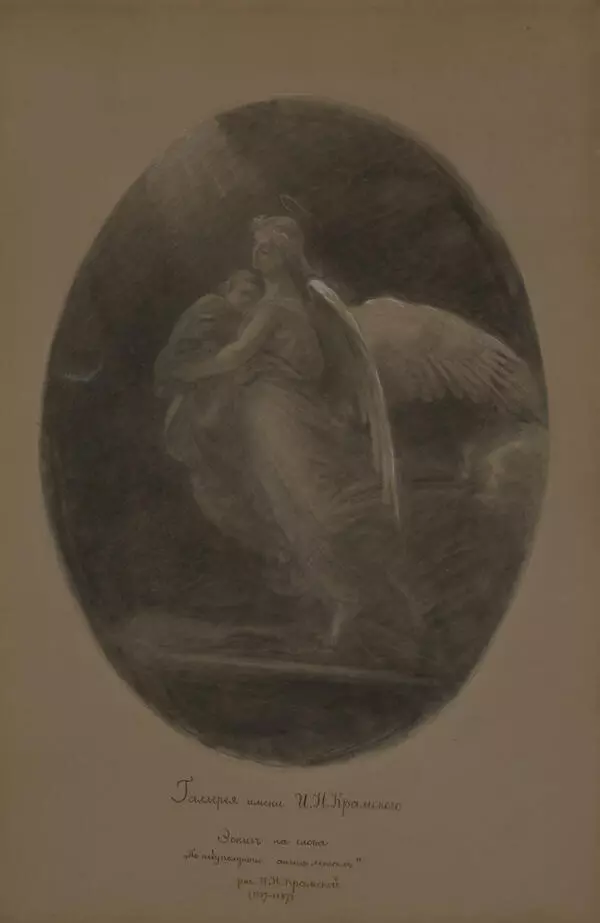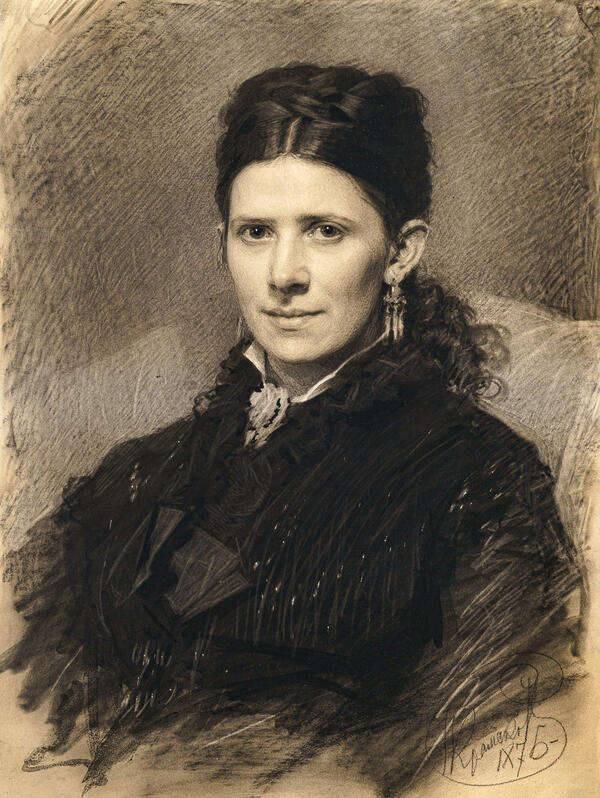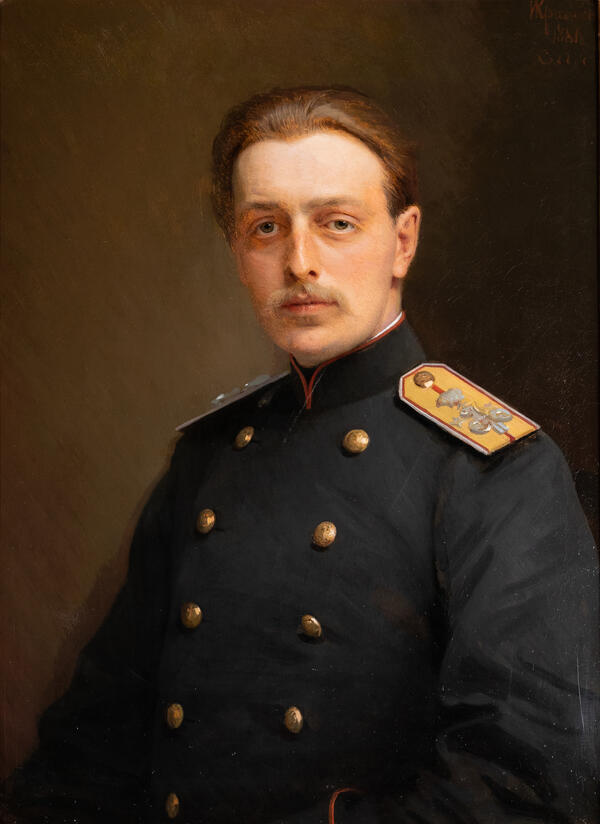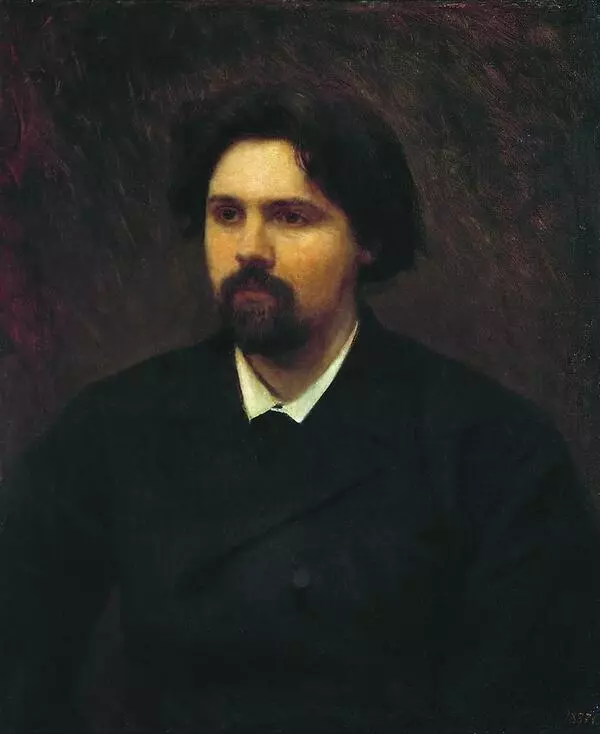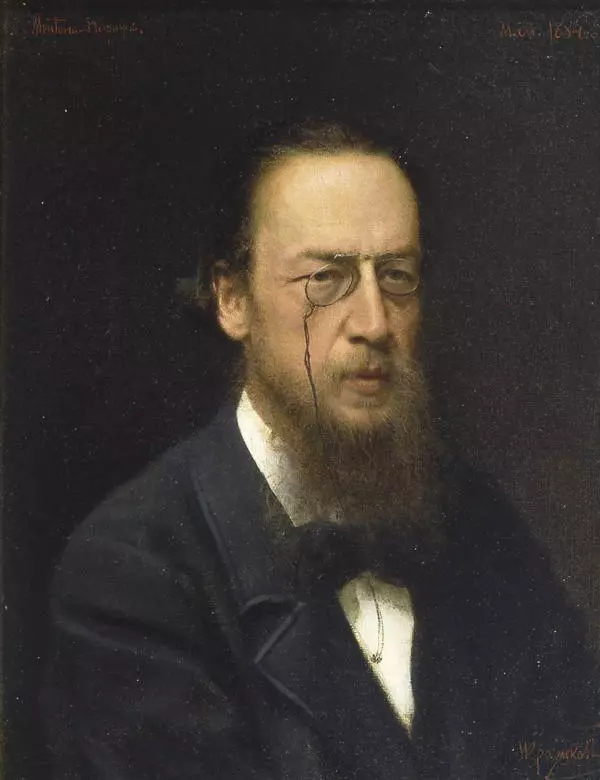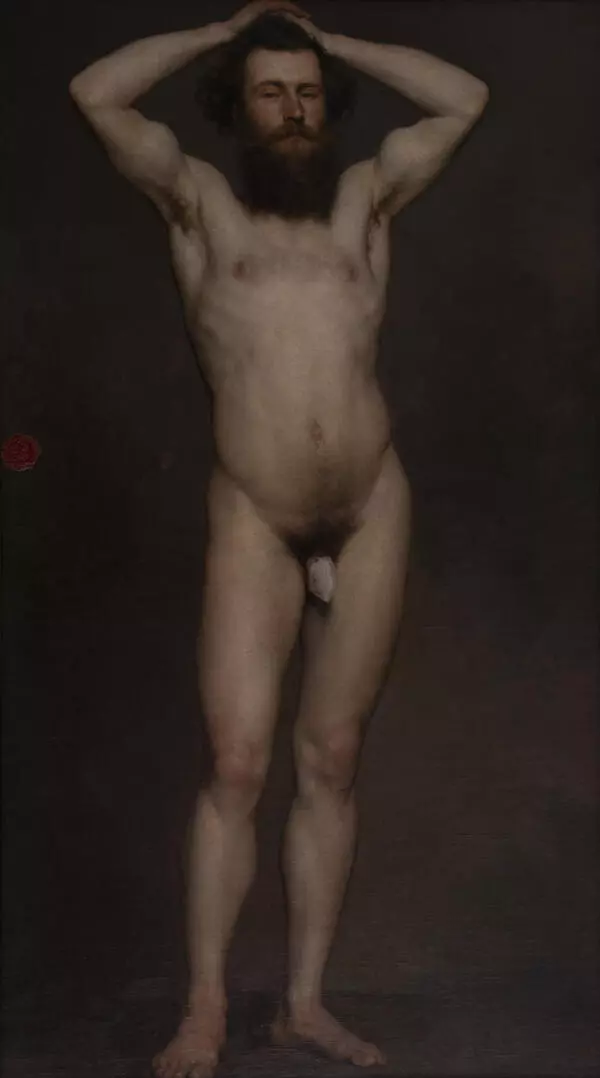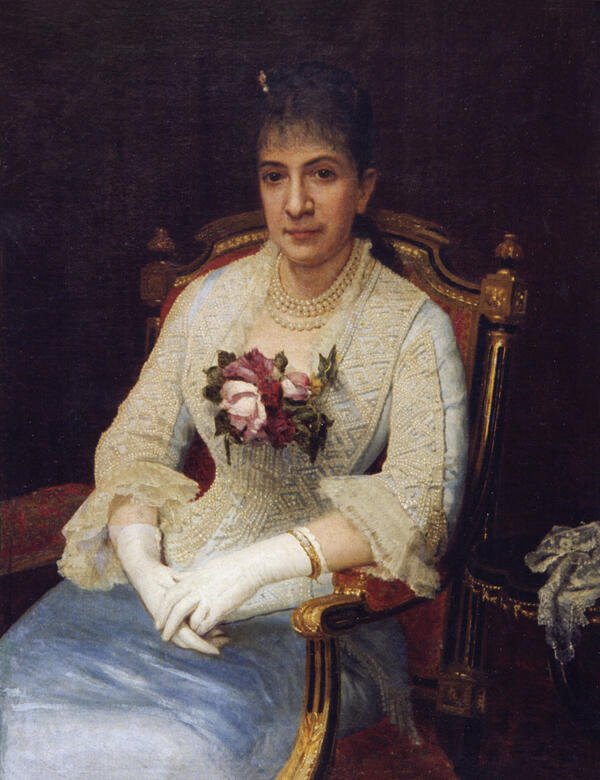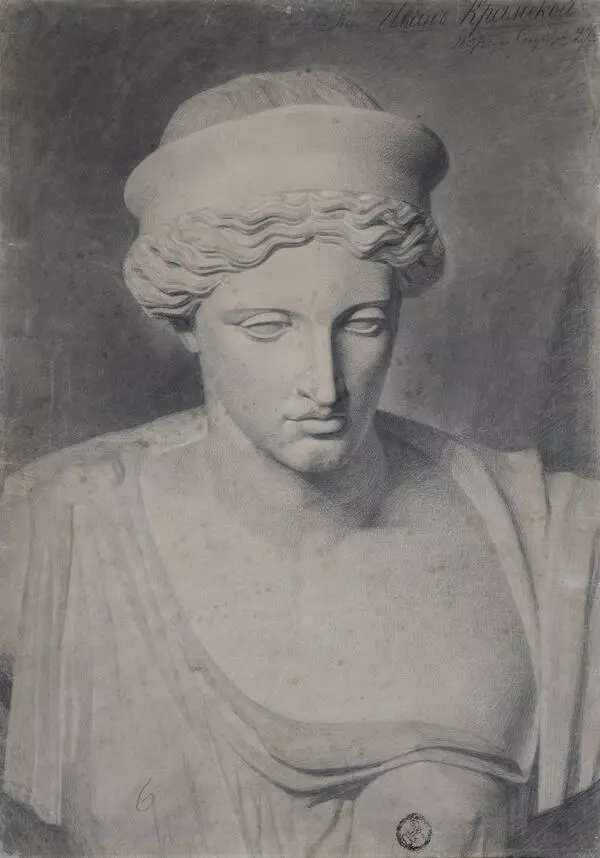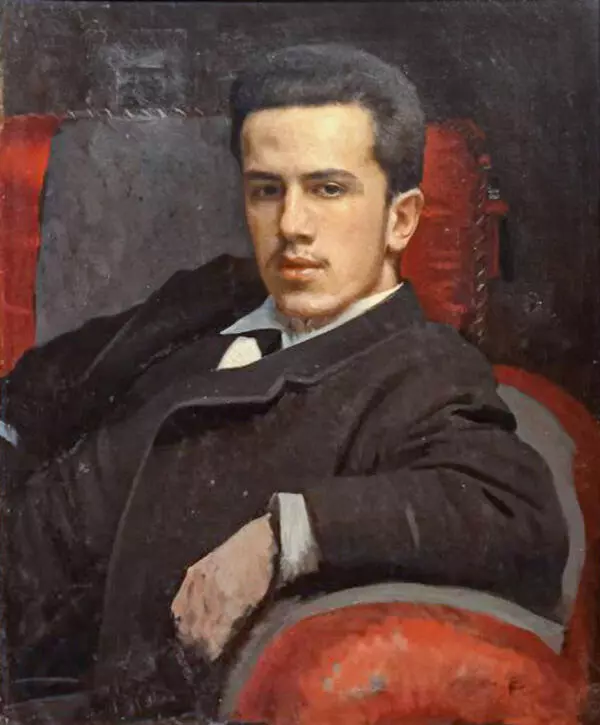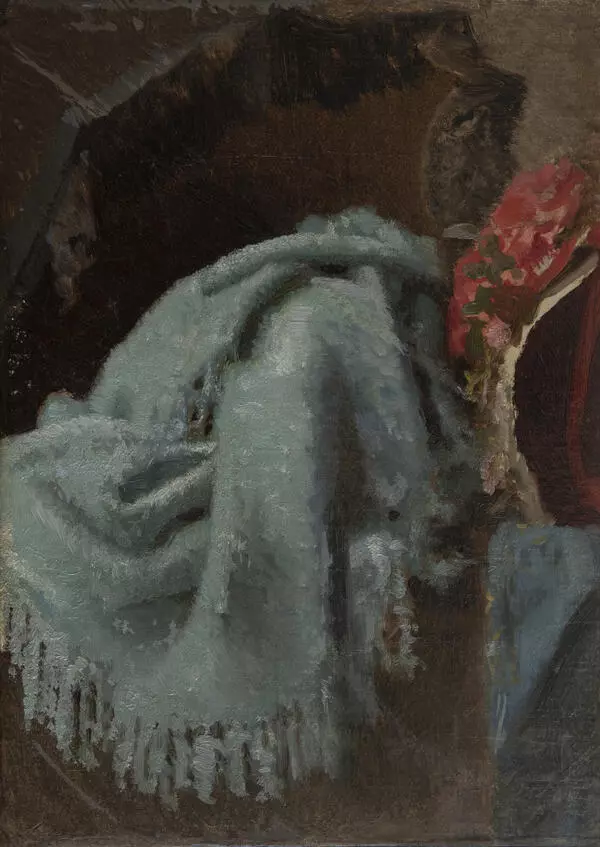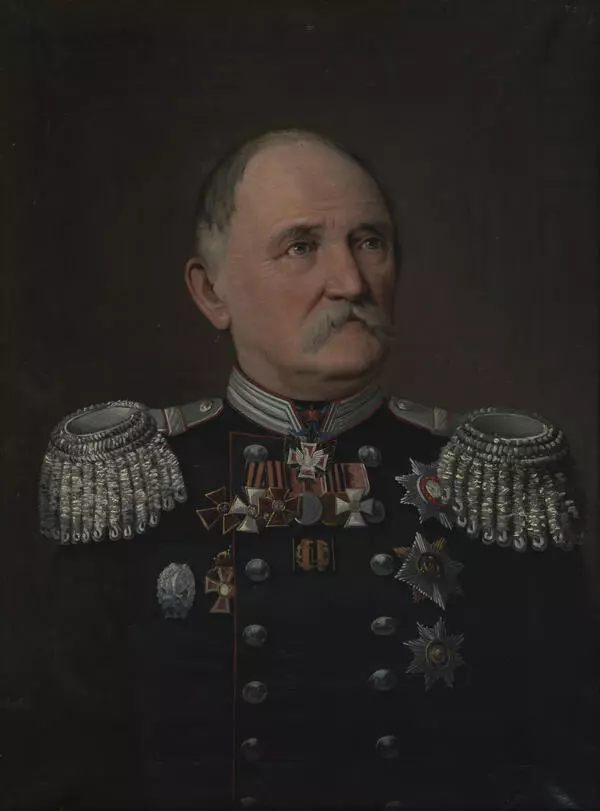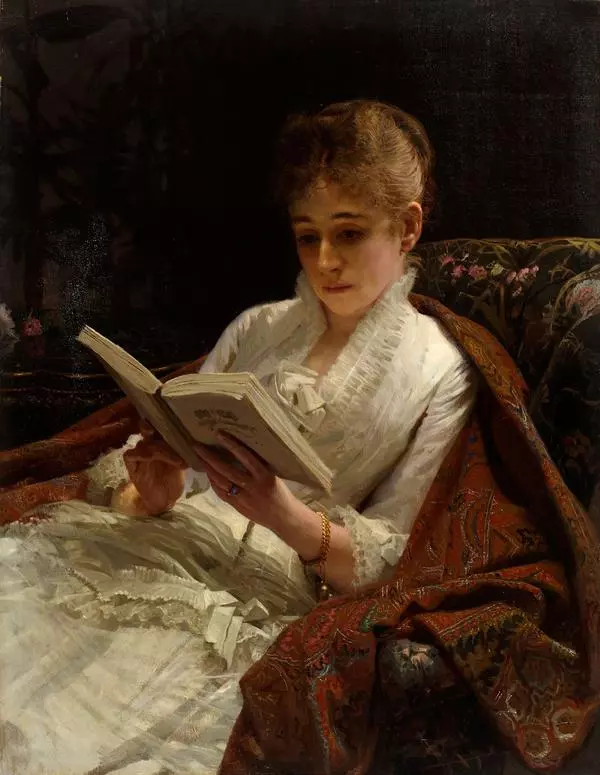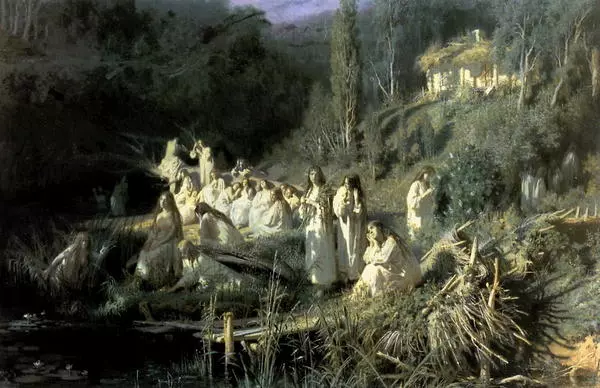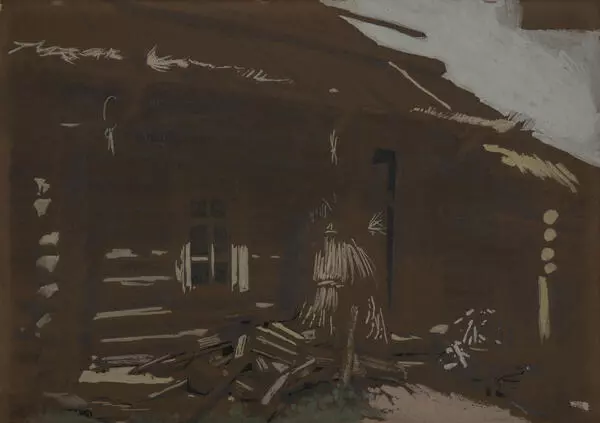Ivan Kramskoi worked in many genres — genre painting and history painting, portraits took a special place in his artwork. Critics noted extreme plausibility, sincerity, and unbiased in his works.
Kramskoi’s most striking period of activity was the seventies when he painted a portrait of Prince Alexander Konstantinovich Bagration-Imeretinsky. The artist worked near Yasnaya Polyana, in the village of Troitsky, Chernsky Uyezd, in the estate of Anna Alexandrovna Mordvinova, the Prince’s wife, who was a relative of Leo Tolstoy. From this estate in 1926, the canvas entered the Tula Museum of Fine Arts.
Kramskoi surprised contemporaries with a rare insight and subtle understanding of human nature. The artist painted portraits of iconic figures of his time, emphasizing their public importance and finding a way to each character. He usually created portraits in a discreet colorful palette against a neutral background. The painter abandoned many accessories and simplified the composition to focus attention on the face of the model. The lighting is very expressive in Kramskoi’s works revealing the shape, the face, and sparkling eyes emphasized the main details.
This work showed the best qualities of Kramskoi as a portrait painter: restrained and modest, with a complete absence of external effects in conveying the character of the hero while portraying deep characteristics of his inner, spiritual world.
Prince Alexander Konstantinovich Imeritinsky was Adjutant General, grandson of David II of Imereti. He was an educated and brave officer, participating in the Caucasus War, the Polish Campaign of 1863, the Russo-Turkish War of 1877-1878. As a military leader, he made a brilliant career and received many awards. He was a State Council member and Warsaw Governor-General. On the uniform of Alexander Imeritinsky, the artist primarily depicted the badge of a graduate of the Nikolaev Academy of the General Staff, a higher military educational institution of the Russian Empire, as well as the aiguillette and the epaulets of the Adjutant General of Emperor’s retinue, which included military personnel with a special trust.
Kramskoi’s most striking period of activity was the seventies when he painted a portrait of Prince Alexander Konstantinovich Bagration-Imeretinsky. The artist worked near Yasnaya Polyana, in the village of Troitsky, Chernsky Uyezd, in the estate of Anna Alexandrovna Mordvinova, the Prince’s wife, who was a relative of Leo Tolstoy. From this estate in 1926, the canvas entered the Tula Museum of Fine Arts.
Kramskoi surprised contemporaries with a rare insight and subtle understanding of human nature. The artist painted portraits of iconic figures of his time, emphasizing their public importance and finding a way to each character. He usually created portraits in a discreet colorful palette against a neutral background. The painter abandoned many accessories and simplified the composition to focus attention on the face of the model. The lighting is very expressive in Kramskoi’s works revealing the shape, the face, and sparkling eyes emphasized the main details.
This work showed the best qualities of Kramskoi as a portrait painter: restrained and modest, with a complete absence of external effects in conveying the character of the hero while portraying deep characteristics of his inner, spiritual world.
Prince Alexander Konstantinovich Imeritinsky was Adjutant General, grandson of David II of Imereti. He was an educated and brave officer, participating in the Caucasus War, the Polish Campaign of 1863, the Russo-Turkish War of 1877-1878. As a military leader, he made a brilliant career and received many awards. He was a State Council member and Warsaw Governor-General. On the uniform of Alexander Imeritinsky, the artist primarily depicted the badge of a graduate of the Nikolaev Academy of the General Staff, a higher military educational institution of the Russian Empire, as well as the aiguillette and the epaulets of the Adjutant General of Emperor’s retinue, which included military personnel with a special trust.


